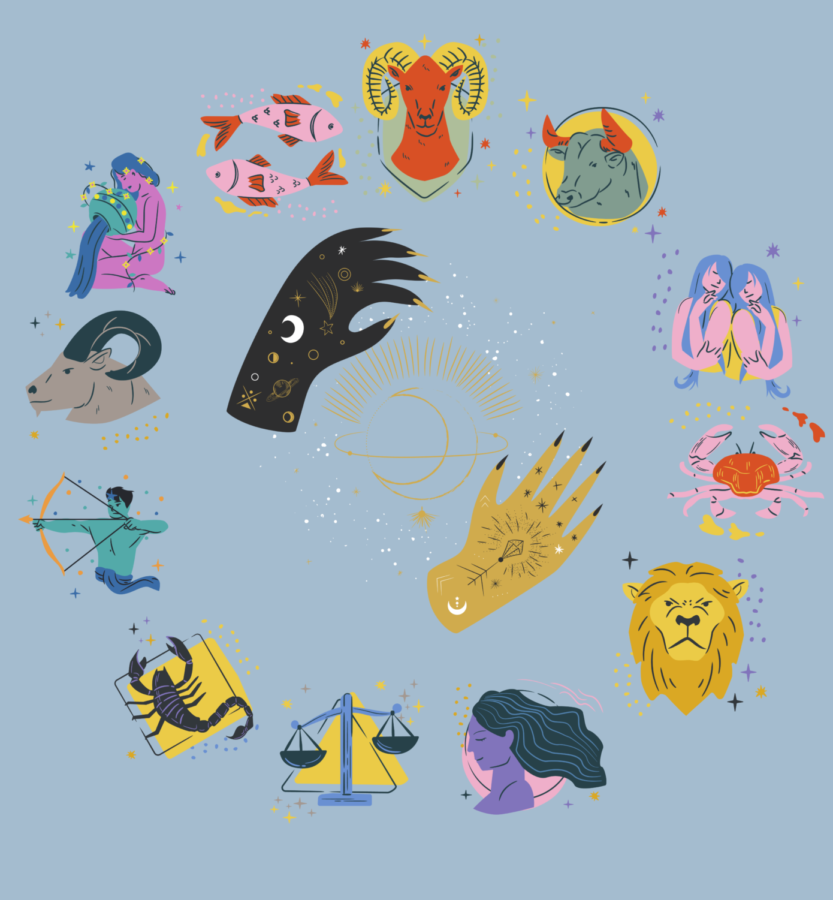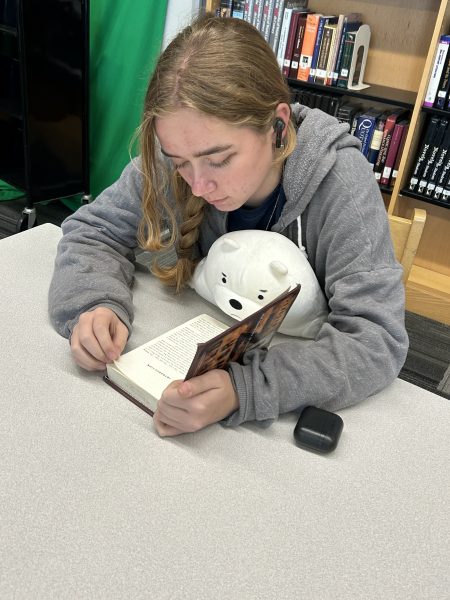Stellar Stories
Exploring the significance of astrology in different cultures
Different beliefs about astrology have been circulating around many societies for thousands of years. From zodiac signs to horoscopes to constellations, astrology is a prominent study that is often spoken about in pop culture, according to thecalifornianpaper.com. However, the roots of astrology are much deeper than knowing certain people’s personality traits or pointing out shapes in the stars.
Constellations
In Greek mythology, the constellation Pleiades was formed from the seven daughters of the Oceanid Pleione and Titan Atlas, who were named Maia, Electra, Taygete, Celaeno Alcyone, Sterope and Merope. In the legend, the sisters were turned into stars by Zeus after seven years of being pursued by Orion, a Boeotian giant. Orion also became a constellation, chasing the sisters across the sky. It has been said that the faintest star of Pleiades was Merope, ashamed to be the only of her sisters to love a mortal—or Electra, who grieved for the city of Troy, all according to britannica.com. Similarly, this cluster of stars was named “subaru” in China, Mao and Japan, meaning “to gather together” or “to govern.”
In the indigenous Blackfoot Tribe, these stars are part of a story called “The Lost Boys.” It was said that there was a young man whose father went out to hunt buffalo, and the son requested he bring back an unborn calf. When the father returned, he did not have a calf, claiming that he had forgotten his promise. The boy was sad and thought his father did not love him. He walked into a prairie and met five boys who also felt neglected by their fathers. The boys did not want to go back to their homes, so they began thinking of what they could do. One young man suggested that they could turn into trees, but there was the fear that they would be chopped down. Another boy said they should become lakes, but the others worried they would dry up. The idea of becoming swans was also rejected because they did not want to be hunted and killed. One of the youngest among the group suggested that they travel to the heavens, where they could look down on the people. The boys agreed to this, all according to science.ucalgary.ca.
Zodiac signs
The term zodiac is derived from the Latin words “zōdiakos kuklos,” which translates to “circle of animals.” This refers to the twelve divisions of celestial longitude based on the elliptical path of the sun. Zodiac signs have been used to determine characteristics of personality in cultures ranging from Chinese, Mesopotamian and Egyptian. Astrology is said to have originated in Sumeria, which raises the question of whether the Sumerians discovered zodiac signs. Babylonian astrology developed within the context of divination. There is a collection of around 32 tablets with inscribed liver models dating back to around 1,875 B.C.E., which makes them the oldest known texts of Babylonian divination. In Sumeria, the twelve zodiacs were called “shiny herd” and had names for each of the signs, such as GU.AN.NA, translating to “Heavenly Bull” (Taurus), and GU, translating to “Lord of the waters” (Aquarius), all according to ancientwisdom.com.
The Chinese Lunar Calendar is a rotating circle of 12 years. Each year is represented by an animal and its attributes. The Chinese calendar is created in cycles of sixty years, each year’s label consists of two components. The first is a celestial stem being one of the five elements, and the second is one of the twelve animal signs. The legend of the Chinese zodiac originated in the Buddhist religion However, some scholars believe that the belief in the Chinese zodiac predates Buddhism, using Chinese astronomy that believed Jupiter to be a constant, as it orbits around the Earth every twelve years. Another belief suggests that animal inclusion in astrology began with Chinese nomadic tribes who developed a calendar based on the animals they hunted, all according to ancientwisdom.com.
Astrology has been around for thousands of years, taking on various forms in different cultures. The circulation of differing beliefs creates a complex environment with many things to learn about and explore.












































